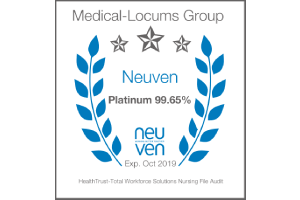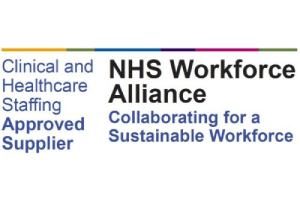A career in midwifery is as challenging as it is rewarding. However, those looking to pursue a career in the industry are often left questioning: how do you become a midwife? While a degree-level midwifery qualification is essential, there are ways to achieve this without the traditional route through university. Each individual should assess their circumstances to determine the best path towards employment.
How Do You Become A Midwife: The Complete Guide
Whether you’ve recently left education and are looking to lay the foundations of a healthcare career or are an experienced nurse planning on changing specialism, this article will help you analyse your options before taking the next steps. Keep reading to learn all the basics, from university course content to connecting with medical recruitment agencies.
- What Is A Midwife?
- Types Of Midwives
- How To Become A Midwife Through University
- How To Become A Midwife Without Going To University Full-Time
- How Long Does It Take To Become A Midwife?
- Can A Midwife Become A Nurse?

What Is A Midwife?
A midwife’s key responsibility is to provide support during pregnancy. They ensure all aspects of the pregnancy are normal and as expected. If complications arise, they refer pregnant patients to a doctor equipped to handle the issue. A midwife can be based in a hospital, a community setting like a doctor’s surgery, or visit you at home. This versatility allows midwives to develop an excellent understanding of the entire pregnancy and patient lifestyle.
During the birth, a hospital midwife will guide the patient and get further medical support if they deem it necessary. Following the birth, a community midwife is assigned to help new mothers feed and care for their babies.
Typically, midwives continue to offer their support for six to eight weeks after the baby is born. They’ll ensure both mother and child are healthy and adjusting well. After this period, new mothers move over to the care of a health visitor who specialises in children’s development until they are five years old.
Midwives operate both on the NHS and privately. Independent midwives work for themselves and can decide on the rates they charge for their services. One benefit of private midwifery is that the same midwife will be used for the entire pregnancy, improving the chance of achieving the kind of birth they’ve aimed for. Midwives often move to privatise their services after years of experience and education in the public healthcare system.

Types Of Midwives
There are many different types of midwife to ensure anyone pregnant can receive the support they need for their circumstances. The NHS will fund large parts of midwifery training to recruit qualified midwives once they’ve passed their assessments. Within the NHS, there are two kinds of midwives:
Hospital Midwives:
Part of a hospital’s maternity team, they’ll care for those who are pregnant in the hospital. This can be during pregnancy, labour or birth and immediately after the baby is born.
Community Midwives:
They’ll provide care in GP practices, homes, or children’s centres. Community midwives work with pregnant individuals throughout the pregnancy until a health visitor takes over care.
In some cases, a specialist midwife with additional training may be better suited to navigate the pregnancy. Specialist midwives are equipped to handle different areas related to the pregnancy, including:
Diabetes: Care for those who are pregnant and also have diabetes.
Antenatal and newborn screening: Conduct tests and checks to ensure the pregnancy develops as expected.
Twins and multiples: Responsible for coordinating the care of those with a multiple pregnancy/birth.
Teen pregnancy: Provides specialist midwifery care for those who are pregnant during their teenage years.
Infant feeding: Assists the mother in initiating and continuing breastfeeding.

How To Become A Midwife Through University
An increasing number of midwives are now opting to achieve their qualifications by specifically studying midwifery at an approved university (you can use this tool to find approved universities). To achieve a Nursing and Midwifery Council (NMC) approved degree, you’ll need to work a total of 4600 hours over three years. Those who obtain a university degree and go straight into midwifery are referred to as ‘direct entry midwives’.
Each university will have its own entry criteria, so it’s important to check the details before submitting an application. Applications are made through the University and Colleges Admissions Service (UCAS). Entry can be very competitive, so any relevant experience you can manage prior to an application will be beneficial. The most successful applicants are those who reach out to their chosen university before finalising their application. This way, they can understand the course content and the type of students that succeed there before submission.
In order to graduate and become an NMC-approved midwife, they must meet the standards expected of each midwife. These standards are grouped under six domains:
- Being an accountable, autonomous midwife
- Safe and effective midwifery care: promoting and providing continuity of care and carer
- Universal care for all women and newborn infants
- Additional care for women and newborn infants with complications
- Promoting excellence: the midwife as colleague, scholar and leader
- The midwife, as skilled practitioner
In achieving their midwifery qualifications, students’ modules will be 50% in theory and 50% in practice. They will be assessed against the NMC standards to ensure they’re ready to provide care of the highest standard.
Once you are fully qualified as a midwife, you can find employment directly through a hospital or with medical recruitment agencies like MLG Healthcare. Using our extensive network of hospitals and clinics, we’ll connect you with employers looking for candidates with your exact skillset. When you choose to work with us, you’ll have access to exclusive job opportunities and continual support throughout your recruitment journey.
Alternatively, those who already have a nursing degree and work in the industry can do a masters in midwifery as a route into the field. Nurses have a fantastic foundation in healthcare that will benefit them as they train in midwifery. Before they begin training, they’ll already meet many of the NMC’s six standards. It is, however, important to be aware that each NHS employing organisation has different rules on whether they will support current staff training as a midwife. So, checking with your organisation before committing to this route towards midwifery is essential.

How To Become A Midwife Without Going To University Full-Time
Recent developments in the healthcare industry mean achieving a degree apprenticeship in midwifery is now possible. This offers an alternative to a full-time university course while studying at a degree standard. Throughout the UK, NHS bodies and other healthcare organisations have partnered with multiple universities to offer a highly practical approach to midwifery. To stay up to date with degree apprenticeship options, you can use the ‘find an apprenticeship’ tool at GOV.UK.
This entry method into the midwifery profession is part of an effort to make working in healthcare more accessible. Potential candidates no longer need to invest thousands into further education to get a foothold in the healthcare industry. In fact, it’s possible to earn money as you learn and grow your career. While it does take longer than studying full-time at university, this way in is often better suited to older candidates who have more financial commitments.

How Long Does It Take To Become A Midwife?
The length of time you’ll spend training to become a registered midwife depends on your chosen route into the profession. An approved full-time midwifery degree will last for three years; however, if you’re working in a relevant role, it’s possible to take a part-time course lasting five or six years.
Similarly, a full-time nursing degree lasts three years (four if taking a dual-field degree). As a registered nurse, you’ll have access to an accelerated degree in midwifery lasting just 18 months.
Alternatively, a level six midwife degree apprenticeship typically takes four years to complete. It includes a mix of learning on the job and studying at an approved university, so it takes longer than a full-time university course.

Can A Midwife Become A Nurse?
As midwifery is a specialised degree in pregnancy and maternity, direct-entry midwives are not able to become nurses without receiving a full nursing degree. This limitation is often why individuals opt for a nursing degree instead of midwifery.
This has been a matter of contention for decades, with many arguing that a flexible workforce within the NHS is essential. With the ongoing nursing recruitment crisis, there’s a large body of thought that believes allowing midwives to branch out would relieve the burden on the NHS. This, in turn, would make the midwifery profession more attractive and improve recruitment in the future.

Take The First Steps Towards Midwifery
Evidently, the road to becoming a midwife can be challenging. However, those in the profession speak very highly of their role. Despite the emotional intensity of the career, very few people experience the joys of childbirth in the same capacity as a midwife. On the financial side, highly experienced and independent midwives can earn an excellent wage for their refined skillset.
If you’ve recently qualified as a midwife and are looking for your first role or are looking to further your midwifery career, there’s no better place to do so than the nation’s leading nursing recruitment agency. We’re experts in healthcare recruitment with a track record for landing our clients in fulfilling and high-paying roles. So, get in touch and find out how we can support you.




